The most apparent characteristic as we grow with age is how we look. It is true that we think differently, we know more, and we are more discerning in our choices, but these are internal differences, not what is most immediately perceived. As Twyla Tharp puts it, “The body doesn’t become less, it becomes different.”
Born in Naples, IT, and having spent most of her life in Brooklyn, now working in Maine, Jocelyn is a mid-career artist who has a new book out examining the question: what does female beauty look like in women her age? She has a formidable skill set and the sophisticated eye of someone who has spent considerable time focused on the meaning of images. The work is challenging as well as beautiful. The making of a book at this level is not for the faint of heart; it is a difficult, time-consuming process where minor decisions are labored over. We wanted to find out what was driving Jocelyn, and why she has chosen this.

What was your time during the pandemic like?
We’ve been at home in Maine on two acres with a ton of animals (3 dogs, 3 cats, a duck, a goose, a parrot, other birds, and a rabbit) and two teenage kids. It’s been hard at times, of course, but we have been very lucky to be in such a relatively safe place. I have dear friends who live in NY (where we moved from) who were traumatized by listening to the sirens day and night while staring out onto empty streets. Maine is very nurturing and beautiful so, while we were alone and isolated and deeply worried for people in more densely populated areas, it occasionally felt like being on retreat in another century. Don’t get me wrong, it was very hard to not see good friends and family for so long, and there were weeks where I couldn’t work because of the anxiety created by watching the news, but we could always get out and walk in a forest, or go look at the ocean, which was a great gift. Maine is very special that way. The access to nature is a great comfort.
“I have pictures of dear friends pregnant in the ’80s, and then images of them now with the 35-year-old child that was in utero at the time of the first picture”
You have been working taking pictures since you were 18; how is it different now for you?
For many years my process remained relatively the same. I’ve used the same medium format film cameras for 35 years, and often return to the same subjects over and over. I have one body of work that is a longitudinal study of the same people over 3 decades. I have pictures of dear friends pregnant in the ’80s, and then images of them now with the 35-year-old child that was in utero at the time of the first picture. It’s quite a study of people over time.
I worked very hard for a long time to make contemplative, psychological portraits that fit into bigger bodies of work — like nudes of women over the age of 50; teenage parents; my mother and father dying — but strangely over the last year my process has really changed. Since the publication of Sovereign, and maybe in some ways in reaction to the darkness of the pandemic, my current work is more collaborative and playful. I’m making pictures at night, with very long exposures, mixed light, and often 3-5 people (always naked). It feels more like working with a dance troupe than traditional portraiture. I’m embracing things like blur and over or underexposure — things I would never have done earlier. I’m ready to shake up my process now. I’m considering working with digital and video, which is a huge departure for me. I’m considering making a series of photographs that are inspired by Victorian horror stories. I love the horror genre and I think it’s been very underdeveloped until recently with people like Jordan Peel and A24 Films.

“Photography creates generous and extraordinary opportunities”
How has your being older informed the work you do? In your latest book Sovereign, the women are older. What is it that you are exploring? Is this work that you could imagine doing when you were younger?
Historically, I have used the camera to slow the world down. I’ve used photography to study my life, the people I love, the world around me, and what I’m curious about. The camera creates access where access is usually denied: being able to photograph someone naked offers a level of intimacy I wouldn’t normally be able to achieve unless the person were my intimate partner. Photography creates generous and extraordinary opportunities.
When I was younger, before I was pregnant, I wanted to see what pregnancy looked like, so I made nude images of pregnant women. When my mother was dying, the only way I could make sense of her imminent death was to photograph her through her illness juxtaposed to images of her garden and our family around her.
Most recently, after I turned 50 and very happily remarried for a second time, I became fascinated and troubled by the way our culture depicts women of a certain age to be both asexual and unattractive. I knew nothing could be farther from the truth, so I began to focus my attention primarily on older women (over 45) in order to create celebratory, empowered, sensual and sexy images of them. I wanted this work to be an assertive counterpoint to the cultural notion that women of a certain age are either invisible or disembodied. This perspective is both inaccurate and cruel, especially given people are living longer and longer. I married my second husband at 53 and I fully intend to have 35 more sexy years with him, at least.
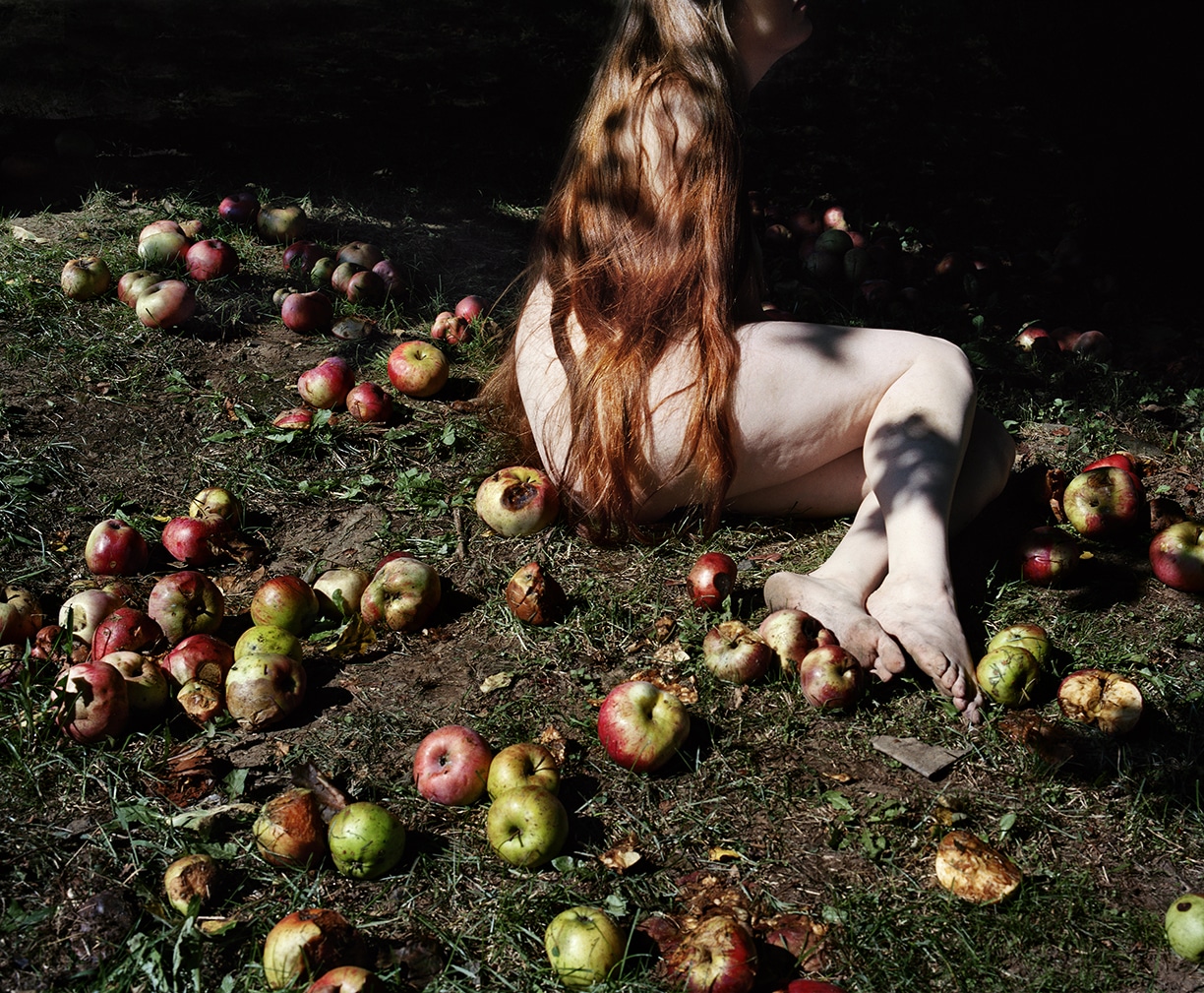
“I married my second husband at 53 and I fully intend to have 35 more sexy years with him, at least”
Getting older has allowed my subject matter to broaden and deepen. I don’t think I could have made Sovereign when I was in my 30s. I feel very connected to the women in the book and see myself in them, or try to. I am certainly very inspired by them, given most of the women in Sovereign are 10-20 years older than I am. They are bravely pointing the way.
5 years ago you moved from NYC to Maine. Many people have in the last year left big cities. How was it for you? What advice would you have for others who may want to make a similar move?
Ah, it was wonderful for us. I adore Brooklyn (where we lived for years and where my father and son were born) and we fantasize about retiring there one day but, for us, raising kids was easier in Maine. We can spread out and play. The outdoors and the sky are a part of your daily life. You can go 6 months in NY and not see the stars or the moon. That’s impossible in Maine. Our 2 acres of land is a space of opportunity for my family, where we can each explore our own interests: my daughter bred ducks for a while; my husband is a devoted gardener and grows heirloom peaches, apples, pears and many vegetables; the yard is my studio and many of my images are made there. There is also magical stuff happening all the time. The Spring Peepers just started singing at night, after being held in frozen hibernation in the pond behind our house all winter. Foxes, deer, porcupine and turkey wander by. The light always seems to be changing, and the weather feels like a mercurial 5th family member that impacts our life in unpredictable ways. My son is the most urban of all of us and he would move back to Brooklyn now if he could, but he surfs, so that will keep him happy for a while.

You have a long interest in nudity. How did that come about?
I always say that my photographs begin with the body. It’s our primary vessel and home. I’m very interested in why we are here (on this earth), why we look the way we do, and how we make meaning in our lives. I studied philosophy as an undergraduate and I think this interest is still the primary impetus behind making portraits — to study the existential reasons for being. The nude, or the human being naked, standing on the earth, is really the bottom line, right? It’s our starting point. You don’t get more basic than that.
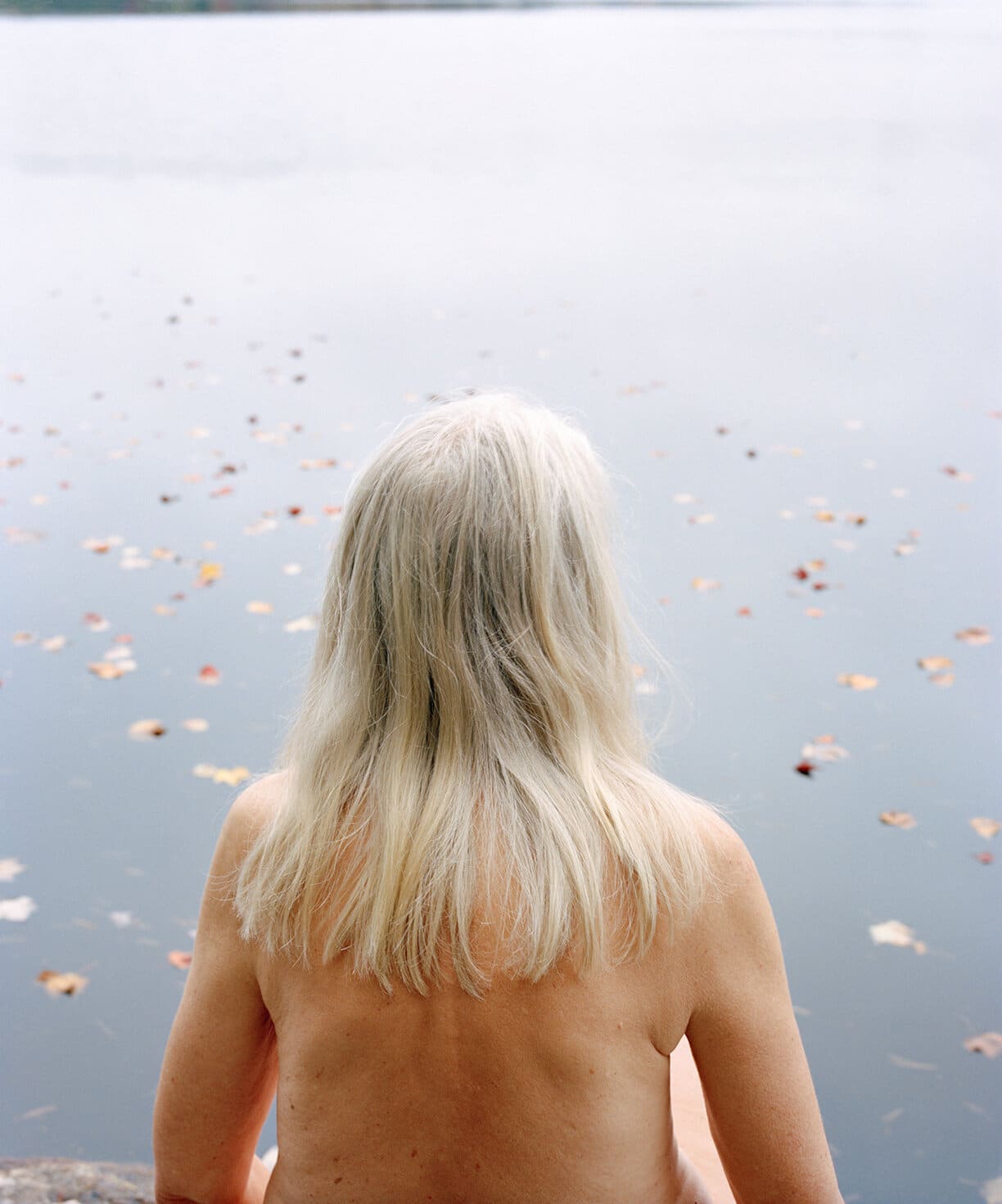
“It is remarkable how taboo images of naked older women are, still”
Do you get any pushback because of the nudity?
Yes, often, but in different ways. Individual viewers can find the work very challenging, and this is true even for people in the art world. I once watched a highly respected curator (someone I like very much) use the palm of his hand to cover a nude photograph of a woman in her 90s. He didn’t say anything, just covered her body. I was really surprised because he didn’t even think about it, he just reacted instinctively. He was clearly uncomfortable; that’s when I knew this subject matter was very important.
Commercially, the work has been hard to promote, sell or publish. I’m not making photographs that many people will buy to hang in their homes, and it’s very hard to publish this work and to find galleries willing to show it.
Similarly, this work is very restricted on any kind of social media. Women’s nipples and pubic hair cannot be shown, so I always have to edit the image, which feels violent and wrong. It is remarkable how taboo images of naked older women are, still.
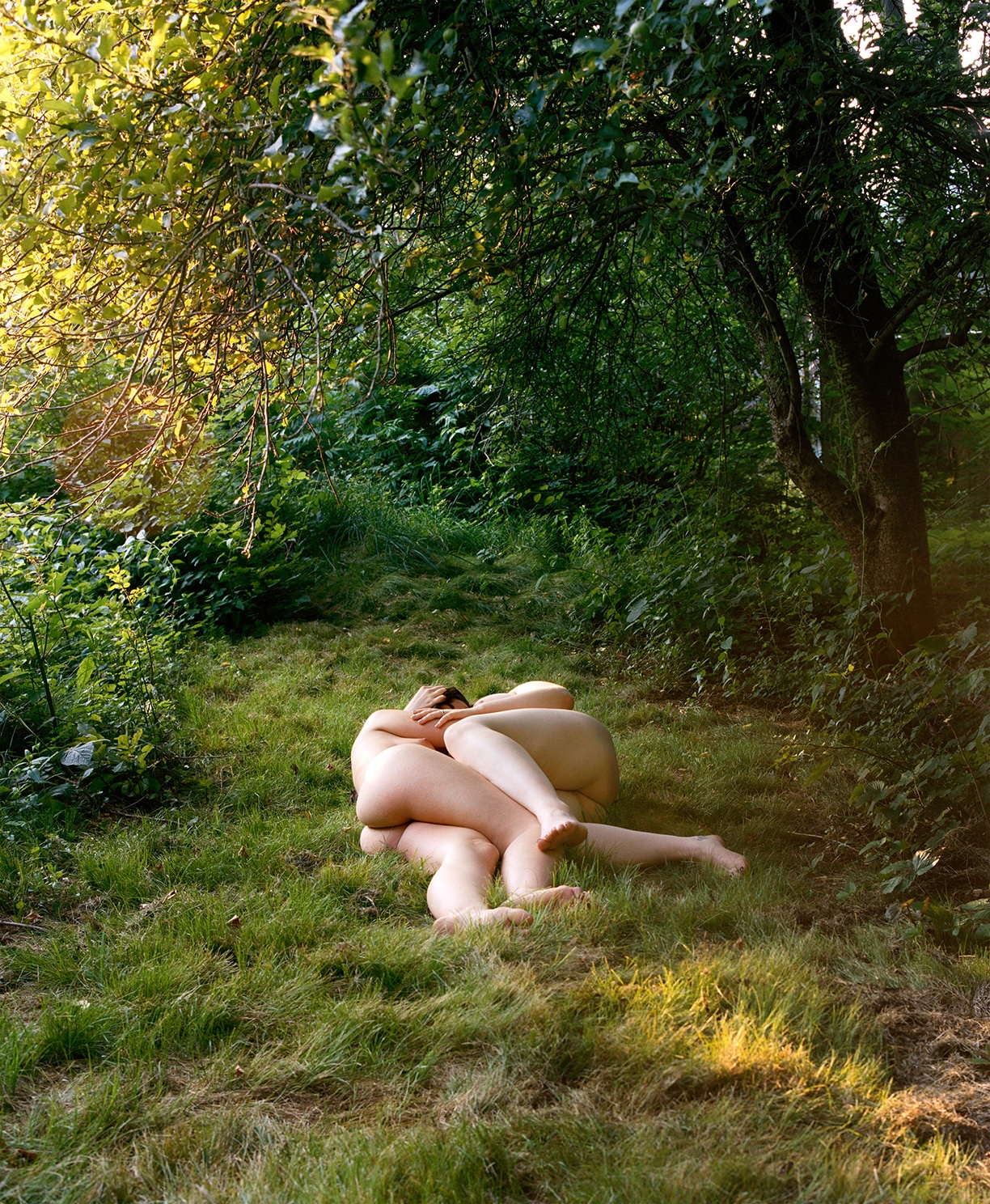
How would you define beauty?
Thankfully, I think people’s true experiences of beauty are profoundly more diverse and subjective than our culture reveals. Commercial media culture offers a wildly limited view of people’s actual preferences. I really believe this. Full-bodied women of every size and shape are extraordinarily beautiful and, frankly, are far more sexy to my eye than the “idealized” hyper skinny body, absent of curves and flesh. I know incredibly charismatic people in their 60s, 70s and 80s, who live sensual and expansive lives, and carry themselves in a way that makes them very beautiful and magnetic.
“Beauty for me is some wild alchemy of confidence, happiness, physical wellbeing, and being at peace in your body”
Beauty for me is some wild alchemy of confidence, happiness, physical wellbeing, and being at peace in your body. I don’t think you can underestimate the importance of being at peace in your body when it comes to attractiveness. Haven’t we all had the unexpected experience of falling temporarily in love with the least likely person in the room (the more homely friend of the model on the couch), because they are funny and smart? Thank God we are actually much more interesting than our current image culture describes us to be. The dominant image culture (magazines, movies, social media, advertising, etc.) needs to do a better job of describing the breadth and range of “sexy and beautiful” because it authentically arrives at our doorstep in every shape, age, race and size. Think of Peter Dinklage. Now, he is sexy.
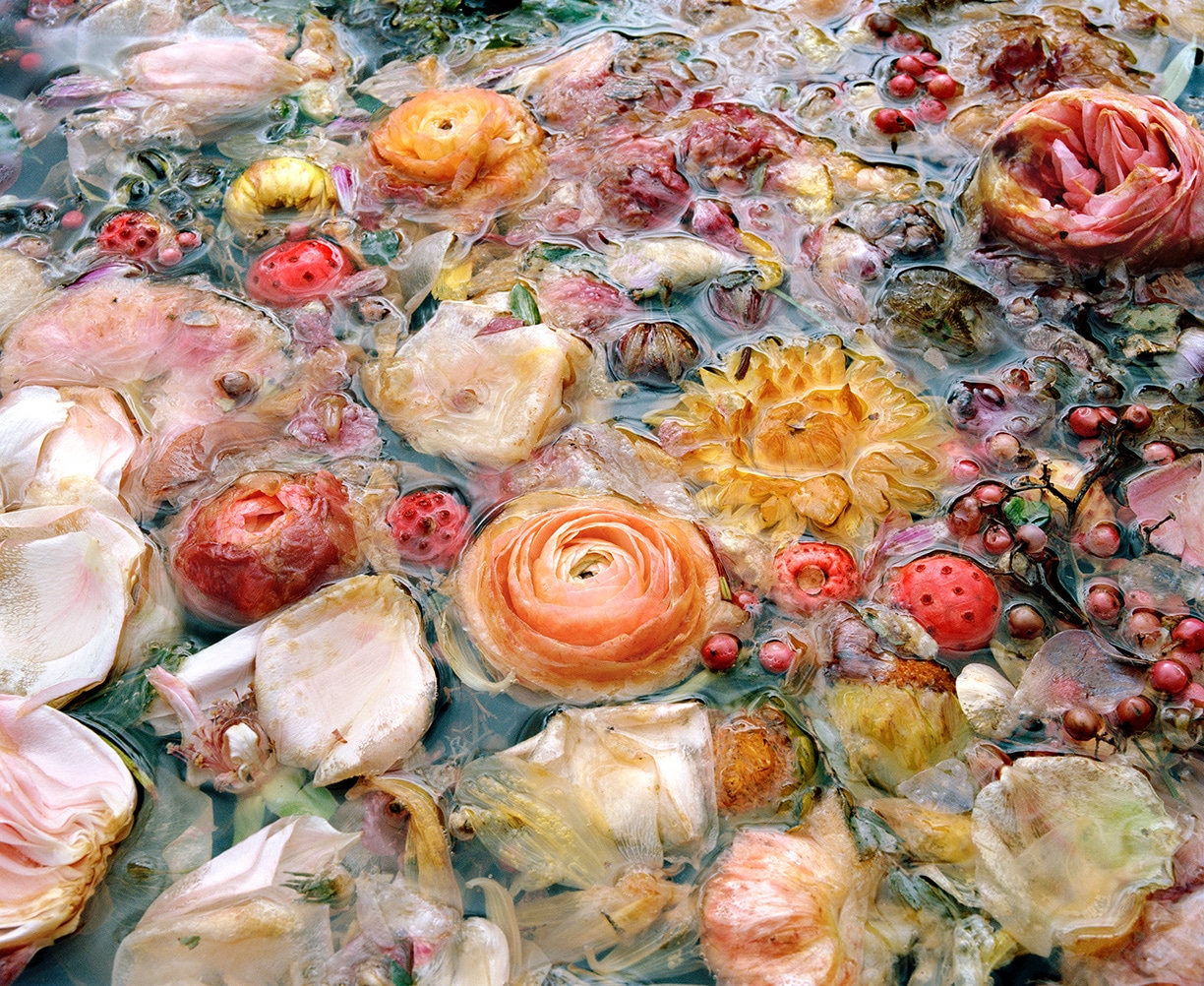
I love your still life work! The sense of beauty intersecting decay is wonderful. But perhaps I am getting it wrong. Could you tell us what you see when you look at those images and how you make them? In a recent showing of the work, the still lives are hung among the nudes. Tell us a bit about that.
It happened by accident. I wanted to save my wedding flowers so I put them in a big tub of water (more like an animal trough, wide and deep) in my yard. It was October and the nights were cold, so the flowers would freeze and then defrost during the day in the sun. I would go out and visit them every day and soon realized there was an interesting subject developing there. The flowers sank and floated and rotted and decayed in different ways in response to their weight and texture, gravity, time, the temperature of the water, and exposure to sun. Quickly I realized that the story of the flowers in the tub was the same story I was telling with my portraits; essentially both were about being embodied and passing through the similar stages of birth, blossoming, middle age, decline and death. The flowers offered a lovely metaphor for what we are all experiencing over our own lifetimes. They were also just beautiful. The way the natural light moved through them, and into the deep water beneath and around them, was far more compelling than anything I could have set up.

Why are there mostly women in your work?
Well, I guess the easiest answer is that I am a woman, so I’m trying to better understand the experience of living in a woman’s body, by photographing women. The questions at the forefront of my mind always drive the work first. So, for now, that curiosity revolves around the fact that I’m aging and I want to see what aging in a woman’s body looks and feels like. I do photograph men, just not as often. I’d actually like to photograph older men now and begin to focus on issues around masculinity and vulnerability. Perhaps even adolescent boys and consider the same thing. That’s an important subject. I once did a body of work in motel rooms around the country where I asked strangers to meet me to have their nude or semi-clothed portrait taken. I emphasized that it was not about a sexual encounter and that I simply wanted to make an honest portrait of them. Most of those people were men. That was an incredibly interesting project that I may return to. The question of Why: Why do you want your portrait taken by a stranger?
“I’m trying to maximize my joy now by staying alert to what really matters to me”
Not to be morbid, but what are your thoughts on end of life?
I’m not sure, but I’d like to be at peace with it. I’ve started studying Buddhism a bit and I certainly want to live my fullest life now. My parents both died in their 60s and I have no intention of doing that, so I’m trying to maximize my joy now by staying alert to what really matters to me. We recently started a nonprofit gallery called SPEEDWELL projects that exhibits the work of remarkable mid- to late-career women, LGBTQ+ and BIPOC artists who, despite their lifetime commitment to their work, have been overlooked by commercial galleries and museums. I’m incredibly excited about the artists and work that SPEEDWELL will champion. So, what are my thoughts on end of life? I want to make sure I don’t have regrets. I have no idea what happens after we die, or when it will come, but I want to have my eyes wide open now so I can do the things I care about.
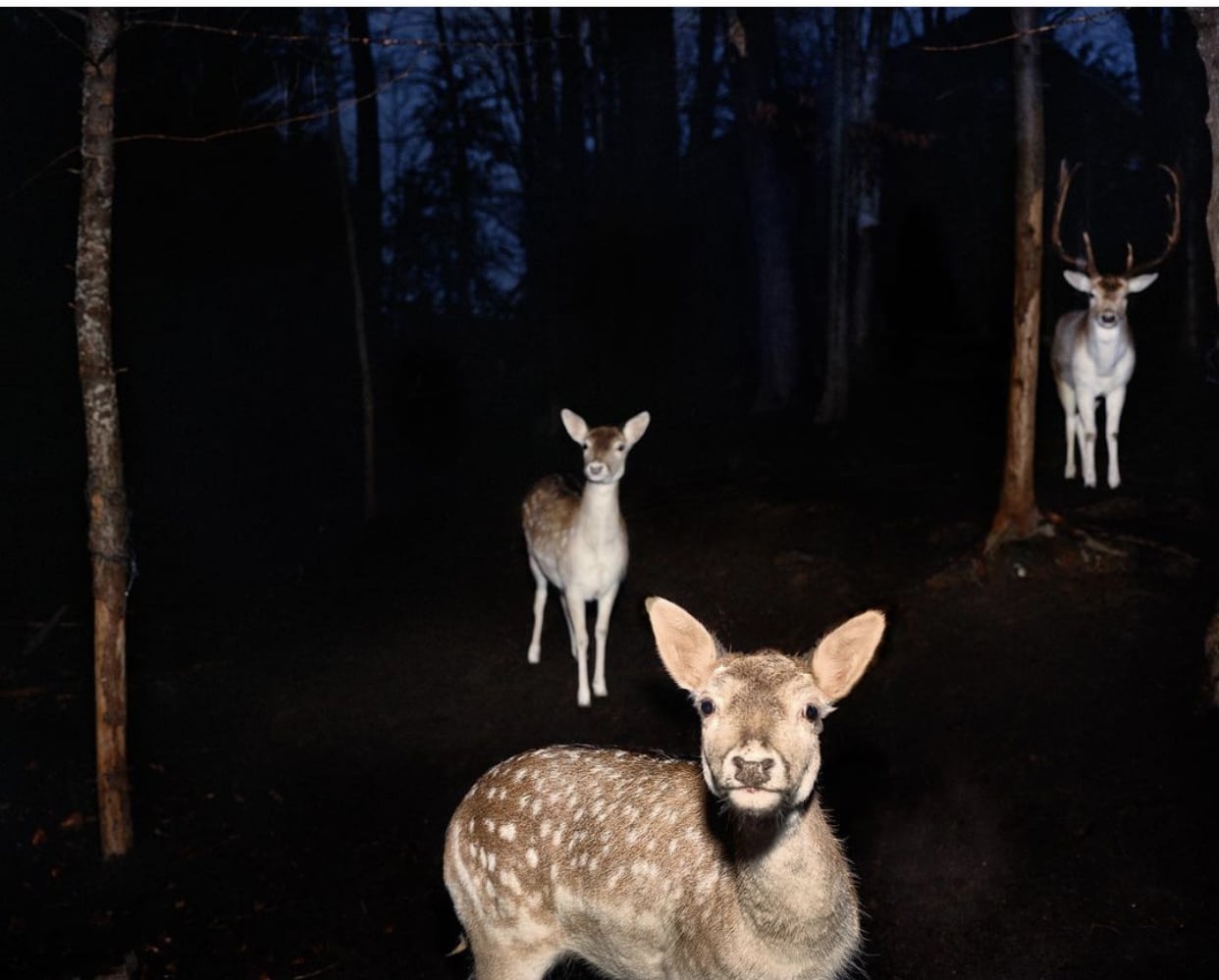
I love the image of the deer at the end of the book. It’s a tremendous image filled with questions. How did that one come to be?
That’s funny. If I tell you it won’t be a mystery, will it? I’ll say one thing: there is no Photoshop in the picture. Those are real deer and I am standing in front of them with my film camera and a flash.
“I’m addicted to the traditional photographic process”
You use an older camera and film. How does the delay in the taking of the picture to the seeing of the image affect what you do?
I love the delay. I’m addicted to the traditional photographic process. I love the magic of not knowing what is captured on the film until you see the film processed, days and often weeks after the making of the picture. Every time I get the film back I get the same adrenaline rush I did 35 years ago. It never stops being magical. I’m not sure I will like the digital process because of all that looking back and forth between the back of the camera and the subject. When you make pictures with film, the camera is an intermediary tool you try to forget about. The goal is to look through the camera to the subject in the moment, being or doing what they are doing. With a digital camera you are always stopping and starting. It feels so much more jagged and controlled and inauthentic in some way.
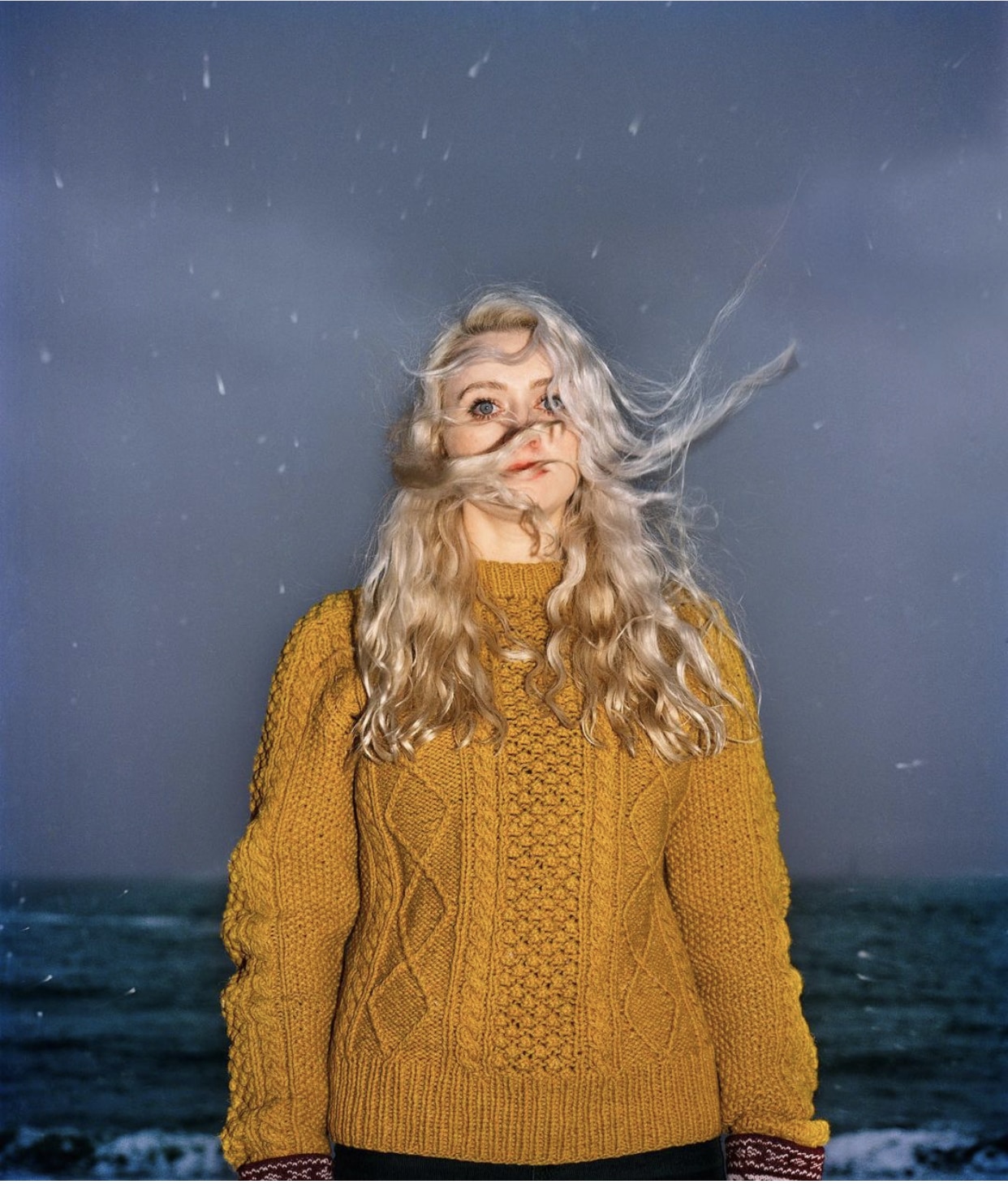
Music, Film, Books
What sort of music do you listen to?
Really eclectic: Radiohead, Beck, Hilary Hahn, Bob Dylan, Erik Satie, Brian Eno, REM, singer songwriters.
Favorite TV shows/movies?
Movies! Movies are like food to our family. Recently I watched The Father and Supernova (both poignant stories about aging); anything by Jordan Peele and A24 Films; sophisticated horror films like Let the Right One In, Parasite and The Witch; and any films by directors like Ingmar Bergman, Jane Campion, Lars Von Trier, Guillermo del Toro. Magic Realism!
This is something I really miss about NY: the ability to see really good films all the time. I love storytelling and narrative. I am a complete sucker for a good story. Add beautiful imagery and I’m a goner.
Best book you read this last year?
I listen to a lot of books on tape. I’m currently reading How to Change your Mind by Michael Pollan; A Swim in a Pond in the Rain by George Saunders; Dusk, Night, Dawn by Anne Lamott; and Olive, Again by Elizabeth Strout. Also Sharon Salzberg.
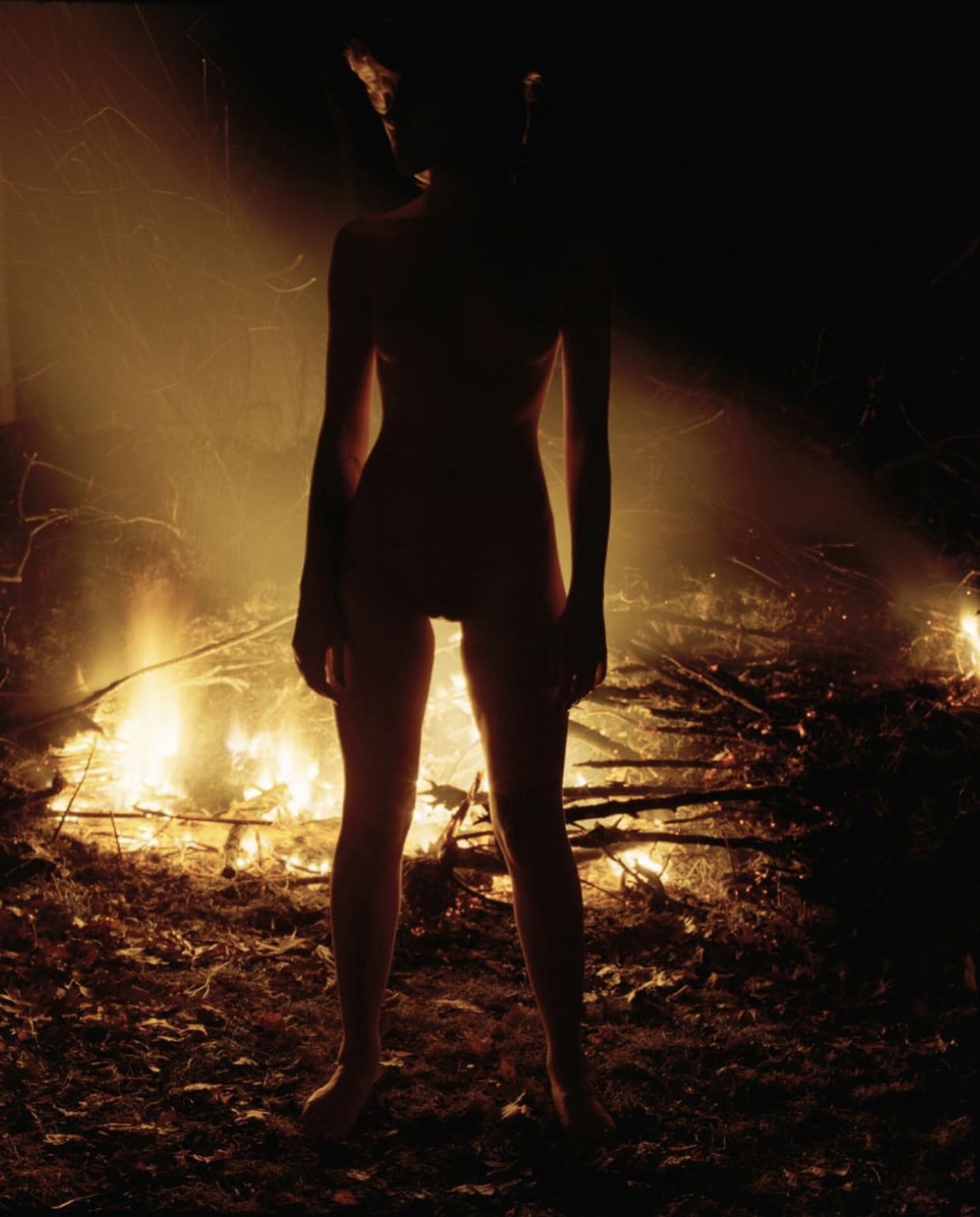
What’s Next
What are you working on next?
I’m editing a body of work of images of women of all ages in nature, many of which are much more experimental. The work feels witchy and wild and all the women are naked doing things like swimming in the ocean at night, standing by bonfires, or climbing trees. I also plan to edit the larger book of longitudinal studies of people over time. That may be the last book I make: portraits of all the people I have traveled through this life with, over 40+ years.
Buy her latest book Sovereign here.
For more on Jocelyn see her site here.
Photo of Jocelyn Lee photo by Michael D Wilson.
All other images by Jocelyn Lee
LEAVE A REPLY
The ideas expressed here are solely the opinions of the author and are not researched or verified by AGEIST LLC, or anyone associated with AGEIST LLC. This material should not be construed as medical advice or recommendation, it is for informational use only. We encourage all readers to discuss with your qualified practitioners the relevance of the application of any of these ideas to your life. The recommendations contained herein are not intended to diagnose, treat, cure or prevent any disease. You should always consult your physician or other qualified health provider before starting any new treatment or stopping any treatment that has been prescribed for you by your physician or other qualified health provider. Please call your doctor or 911 immediately if you think you may have a medical or psychiatric emergency.


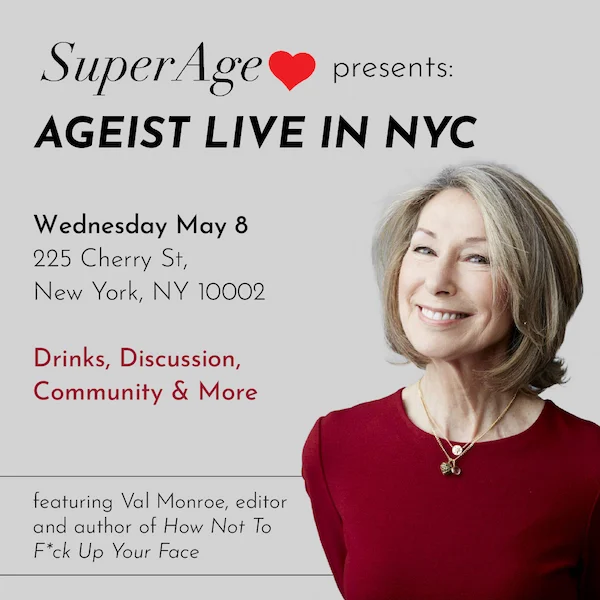
Do you happen to like the work of Sally Mann? Or Rineke Dijkstra? Or Jitka Hanzlova? They capture youth juxtaposed to your capturing aging but similar in visual honesty of their subject.